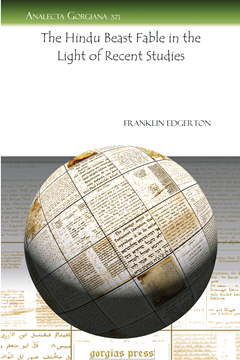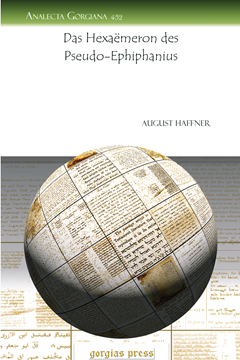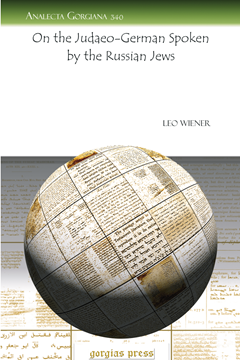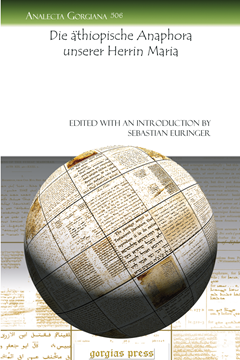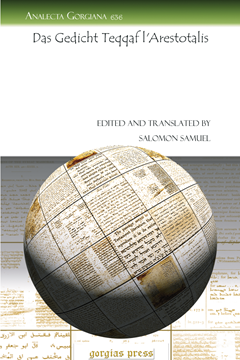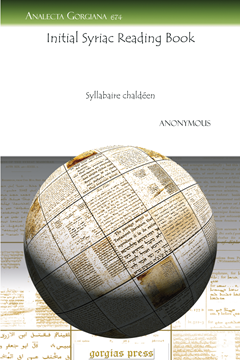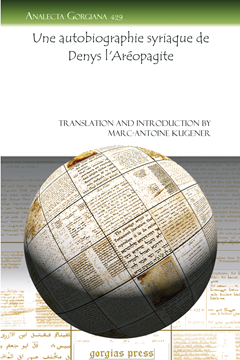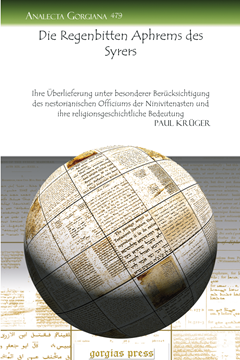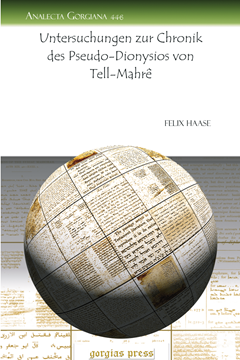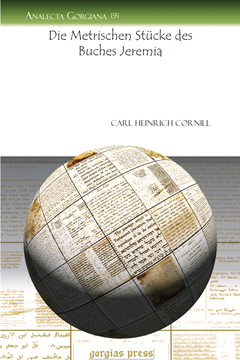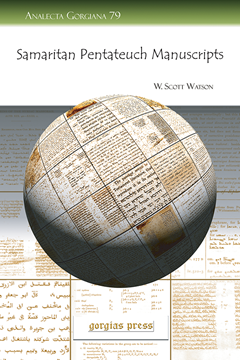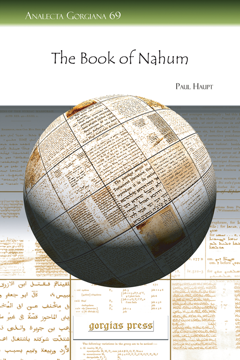Analecta Gorgiana
Analecta Gorgiana is a collection of long essays and short monographs which are consistently cited by modern scholars but previously difficult to find because of their original appearance in obscure publications. Carefully selected by a team of scholars based on their relevance to modern scholarship, these essays can now be fully utilized by scholars and proudly owned by libraries.
The Christian Approach to Moslems
A Course for Adult Groups
Series: Analecta Gorgiana 180
ISBN: 978-1-60724-273-4
In the days when many Americans were first becoming aware of the larger religious world, Sailer introduced them to Islam. Reaching for an understanding of how the two religions relate, he begins this study with an introduction to the Muslim world. Sailer approaches the subject with a respect for Islam and its believers. Aiming to prepare missionaries for Muslim regions, he writes for a general readership. Understanding, he believes, begins with an overview of Muslim life and the character and influences on Islam. Designed as a short adult course on the subject, this booklet has instructions for the leader of an adult group on the topic. Interested in the impact of Christianity on Islam, Sailer explores what churches might do. Taken all together, this little booklet spells out a plan of action for what the author saw as a missionary opportunity.
$42.00 (USD) $25.20 (USD)
The Hindu Beast Fable in the Light of Recent Studies
Series: Analecta Gorgiana 371
ISBN: 978-1-60724-658-9
Edgerton's review of Hertel's text of the Paficatantra with specific reference to Hertel's interpretation of the Beast myth.
$42.00 (USD) $25.20 (USD)
Das Hexaëmeron des Pseudo-Ephiphanius
Series: Analecta Gorgiana 452
ISBN: 978-1-60724-886-6
August Haffner provides a critique of Ernst Trumpp’s use of the Ethiopic and Arabic sources used in his publication of the Hexamaron of Pseudo-Ephiphanius.
$42.00 (USD) $25.20 (USD)
The Order of Conditional Thought
Series: Analecta Gorgiana 377
ISBN: 978-1-60724-626-8
Prof. Nutting surveys and explains the psycological reasoning behind the conditional sentence, providing context for the often confusing grammatical constructions they present.
$42.00 (USD) $25.20 (USD)
On the Articular Infinitive in Polybius
Series: Analecta Gorgiana 300
ISBN: 978-1-60724-562-9
Hewlett explores the specific use of the Ancient Greek articular infinitive in Polybius.
$42.00 (USD) $25.20 (USD)
Analogy in the Semitic Languages
Series: Analecta Gorgiana 301
ISBN: 978-1-60724-563-6
Abel H. Huizinga was a noted scholar of Hebrew, and in this, his dissertation for John's Hopkins University, he discusses the mechanics of analogy in semitic languages with a focus on Hebrew.
$42.00 (USD) $25.20 (USD)
On the Judaeo-German Spoken by the Russian Jews
By Leo Wiener
Series: Analecta Gorgiana 340
ISBN: 978-1-60724-594-0
Leo Wiener presents an overview of the history, culture, and language of the Jews who emigrated from Germany to Slavic countries and continued to speak a dialect of German.
$42.00 (USD) $25.20 (USD)
Die äthiopische Anaphora unserer Herrin Maria
Edited with an Introduction by Sebastian Euringer
Series: Analecta Gorgiana 506
ISBN: 978-1-60724-985-6
Sebastian Euringer publishes here the Ethiopic text of an Anaphora dedicated to the Virgin Mary. Supplementing the Ethiopic text, Euringer also includes a critical apparatus with variant readings and a German translation.
$42.00 (USD) $25.20 (USD)
Das Gedicht Teqqaf l’Arestotalis
Edited and Translated by Salomon Samuel
Series: Analecta Gorgiana 636
ISBN: 978-1-61719-585-3
This work, the author’s dissertation, has for its subject a unique didactic Syriac poem (301 lines) on philosophy, particularly of the Aristotelian variety, and wisdom generally. After introducing the text, the author gives a critical edition with German translation.
$42.00 (USD) $25.20 (USD)
Initial Syriac Reading Book
Syllabaire chaldéen
By Anonymous
Series: Analecta Gorgiana 674
ISBN: 978-1-61719-624-9
This small practice book for learning to read Syriac went through several printings at the Dominican Press in Mosul. It guides the reader through letter forms into words and then some practice reading passages.
$42.00 (USD) $25.20 (USD)
Untersuchungen zur Syntax des Afraates
I. Die Relativpartikel und der Relativsatz
Series: Analecta Gorgiana 646
ISBN: 978-1-61719-595-2
This grammatical study focuses on how the relative particle is used in the Demonstrations of fourth century Syriac author Aphrahat. A great number of examples from Aphrahat’s writings are included in both Syriac and in German translation.
$43.00 (USD) $25.80 (USD)
Ein Bilderzyklus in der Gräberhöhle der St. Euthymios-Laura auf Mardes (Chribet el-Mard) in der Wüst
Zugleich ein Beitrag zur Geschichte des frühbyzantinischen Mönchtums und zur Topographie der ältesten Lauren und Koinobien Palästinas
Series: Analecta Gorgiana 509
ISBN: 978-1-60724-988-7
The caves that make up the coenobitic Monastery of St. Euthymios include several interesting and well-preserved wall paintings. In the present article, Andreas Mader presents a thorough description of these caves and paintings and includes several photographs for reference.
$43.00 (USD) $25.80 (USD)
Une autobiographie syriaque de Denys l'Aréopagite
Translation and Introduction by Marc-Antoine Kugener
Series: Analecta Gorgiana 429
ISBN: 978-1-60724-735-7
The “Autobiography” of Dionysius the (Pseudo-)Aereopagite exists in two separate recensions found in three manuscripts. Marc-Antoine Kugener publishes here the Syriac text of the two recensions along with an introduction and a German translation.
$43.00 (USD) $25.80 (USD)
Die äthiopische Anaphora des hl. Athanasius
Edited and Translated by Sebastian Euringer
Series: Analecta Gorgiana 462
ISBN: 978-1-60724-915-3
In the present article, Sebastian Euringer publishes the Ethiopic text of an anaphora attributed to Athanasius. Euringer also provides a German translation of the text as well as a critical apparatus with variant readings and critical notes.
$43.00 (USD) $25.80 (USD)
Die Regenbitten Aphrems des Syrers
Ihre Überlieferung unter besonderer Berücksichtigung des nestorianischen Officiums der Ninivitenasten und ihre religionsgeschichtliche Bedeutung
By Paul Krüger
Series: Analecta Gorgiana 479
ISBN: 978-1-60724-947-4
Paul Krüger discusses the influence of the “rain prayer” of Ephrem by tracing its use throughout several stages in the development of the Syriac liturgical traditions.
$43.00 (USD) $25.80 (USD)
Verbals in -tos in Sophocles
Series: Analecta Gorgiana 305
ISBN: 978-1-60724-567-4
Charles Bishop, whose life work revolved around the study of -teos adjectives in Greek and cognate forms in other Indo-European languages, examines the specific role of such adjectives in the plays of Sophocles.
$43.00 (USD) $25.80 (USD)
On the Recession of the Latin Accent in Connection with Monosyllabic Words and the Traditional Word-
Series: Analecta Gorgiana 380
ISBN: 978-1-60724-629-9
Prof. Radford uses early Latin poetry to examine patterns of vowel quantity in early spoken Latin.
$43.00 (USD) $25.80 (USD)
Untersuchungen zur Chronik des Pseudo-Dionysios von Tell-Mahrê
By Felix Haase
Series: Analecta Gorgiana 446
ISBN: 978-1-60724-854-5
Felix Haase presents one of the first in-depth surveys of the text of the Chronicle of Pseudo-Dionysius of Tell-Mahre and focuses on the issue of the texts that were used as sources for the composition of the Chronicle
$43.00 (USD) $25.80 (USD)
The Liturgy of Constantinople
Antient Liturgies
Series: Analecta Gorgiana 170
ISBN: 978-1-60724-185-0
C. E. Hammond's Antient Liturgies provided a valuable resource at an early stage in comparative liturgical studies. Free of extensive critical apparatus, Antient Liturgies presents a collection of historic forms of worship from the Western, Eastern, and Oriental Churches. This extract from the book focuses on the Liturgy of Constantinople. As Hammond explains, this liturgy contains elements of the St. Basil, St. Chrysostom, and Presanctified liturgies presented in Greek. As an analytical introduction this early study continues to provide a broad overview of early Christian worship made available in an accessible and convenient format for students and scholars.
$43.00 (USD) $25.80 (USD)
Die Metrischen Stücke des Buches Jeremia
Series: Analecta Gorgiana 191
ISBN: 978-1-60724-287-1
This brief study entails a reconstruction of the metrical pieces of the book of the prophet Jeremiah. Laid out in poetic stanzas, various sections of this noteworthy prophetic book are presented in a form intended to facilitate analysis. Segments of several chapters are included, scanned according to the analytical parameters of Cornill. Noting that Jeremiah differs from the other major prophets Isaiah and Ezekiel in the reduced amount of poetry, Cornill nevertheless seeks a metrical pattern in the work of the prophet and lays it out in the original Hebrew. An informative foreword explains the method and layout choices used. Students of Hebrew metrics or ancient poetry in general will find these insights useful.
$43.00 (USD) $25.80 (USD)
A Tract of Plutarch on the Advantage to be Derived from One's Enemies
Series: Analecta Gorgiana 7
ISBN: 1-59333-484-2
This Syriac edition with English translation is the historic first printing of such an edition of the manuscript available to European scholars. The unusual nature of Syriac monks translating the work of the Greek heathen Plutarch give this document inherent historical value.
$43.00 (USD) $25.80 (USD)
The Origin and Mutual Relation of the Synoptic Gospels
By F. H. Woods
Series: Analecta Gorgiana 18
ISBN: 1-59333-496-6
The vexing question called the Synoptic Problem has long interested New Testament scholars. Woods weighs in on this question providing evidence for Mark’s priority based on the use of language in the Gospels.
$43.00 (USD) $25.80 (USD)
Acts of Saint George
By E. W. Brooks
Series: Analecta Gorgiana 8
ISBN: 1-59333-485-0
The classic hagiography of Saint George is presented here by E. W. Brooks. He gives a critical edition of the Syriac accompanied by an annotated English translation of the Acts. The “Acts of Saint George” stands in the tradition of early Christian devotional and historical records, and is a standard source for information about this formative saint.
$43.00 (USD) $25.80 (USD)
Samaritan Pentateuch Manuscripts
Two First-Hand Accounts
Series: Analecta Gorgiana 79
ISBN: 978-1-59333-892-3
The three essays in this volume address the physical, historical and literary features of what were at the time two of the very earliest clearly datable manuscripts of the Pentateuch known to exist.
$43.00 (USD) $25.80 (USD)
The Book of Nahum
Translation, Commentary, Notes and Edited Text
By Paul Haupt
Series: Analecta Gorgiana 69
ISBN: 978-1-59333-885-5
Presenting an original translation with introduction and commentary as well as an edited Hebrew text along with critical notes, this is an excellent resource for the study of the book of Nahum, both for the layperson and the scholar.
$43.00 (USD) $25.80 (USD)


